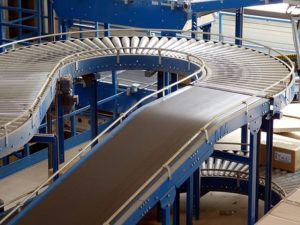There are various things to consider when choosing the right type of conveyor for the project. Remember that each item has its own importance and can impact the conveyor selection. Use the following tips to make an informed choice for your operation.
Product Specifications
 As far as choosing the right conveyor is concerned, the product specification is the most important item to consider. You need to determine the width, length, and height of the product. The dimensions determine the conveyor specifications such as roller centers, conveyor width, transfer needs, and guide rail specifications. Also, you have to consider the product weight. You should note that the weight of the product determines a lot of aspects of conveyor selection.
As far as choosing the right conveyor is concerned, the product specification is the most important item to consider. You need to determine the width, length, and height of the product. The dimensions determine the conveyor specifications such as roller centers, conveyor width, transfer needs, and guide rail specifications. Also, you have to consider the product weight. You should note that the weight of the product determines a lot of aspects of conveyor selection.
Accumulation Requirements
Accumulation is common in any production requirement, and it is necessary for reducing downtime when a piece of equipment like a palletizer goes down. When you review your accumulation needs, you have to take into account product information. For instance, if you want to accumulate 200 feet of cases before a palletizing cell, then you need a zero pressure accumulation system.
Guide Rails
Guide rails play an important role in the conveyancing system. However, they can cause problems if they are improperly selected. You should note that guide rails are not always needed, but when they are needed, ensure the space between the rails allows for your products to be conveyed. Usually, guide rails cause problems at curved sections. Therefore, you need to ensure you have the right rail spacing to allow for the product to convey around the curve. Also, some products may not react well to the guide rail and may need special attention.
Washdown Requirements
The truth is that washdown requirements can impact your choice for a conveyor on both conveyor construction and cost. If you are running a warehouse, you do not need a washdown rated conveyor, so an aluminum bolted construction or mild steel conveyor is sufficient. However, most applications in food, pharmaceutical, and dairy industries need various levels of washdown rating where the stainless steel conveyors ought to be used.
Environmental Conditions
Usually, environmental conditions get overlooked and not explored when choosing the right conveyor system. It is necessary to understand the environment where the conveyor will be placed. For example, if you are handling metal parts, then you may have cutting oil residue or metal shavings getting their way into the conveyor, causing malfunctions.
